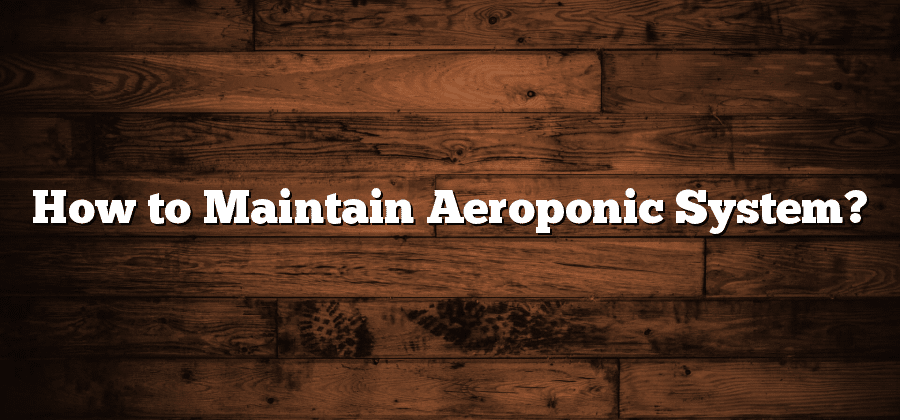Understanding the Basics of Aeroponic Systems
Aeroponic systems are a cutting-edge method of growing plants that avoids the use of soil and instead relies on a nutrient-rich mist to nourish the plant roots. This technology has gained popularity in recent years due to its many advantages over traditional soil-based cultivation. In an aeroponic system, plants are typically placed in a sealed chamber or container, with their roots suspended in the air. A fine mist of nutrient solution is then sprayed onto the roots at regular intervals, providing them with essential nutrients for growth and development.
One of the primary benefits of using aeroponic systems is the ability to maximize space and efficiency in plant cultivation. By eliminating the need for soil, growers can optimize the use of available land and increase crop yields. Additionally, the misting technique used in aeroponics ensures that plants receive a consistent and balanced supply of nutrients, resulting in healthier and quicker growth. This innovative technique also allows for precise control over environmental factors such as temperature, humidity, and light, further enhancing the growth potential and overall productivity of the plants. As more research and advancements are made in aeroponic systems, the future of agriculture looks increasingly promising.
Selecting the Right Aeroponic Equipment
Selecting the right aeroponic equipment is a crucial step in setting up a successful aeroponic system. The equipment you choose will determine the effectiveness and efficiency of your system, as well as the overall health and productivity of your plants. There are several factors to consider when selecting aeroponic equipment, such as the size of your system, the type of plants you will be growing, your budget, and the level of automation you desire.
One of the key considerations in selecting aeroponic equipment is the size of your system. The size of your system will determine the number and capacity of aeroponic units you will need. It is essential to choose equipment that can accommodate the volume of plants you intend to grow. Additionally, the type of plants you plan to grow is another critical factor to consider. Different plants have different requirements in terms of spacing, support structures, and nutrient delivery. Therefore, it is important to select equipment that is specifically designed for the type of plants you will be cultivating.
Proper Cleaning and Sanitization Techniques
After setting up your aeroponic system, it is crucial to establish a regular cleaning and sanitization routine. This ensures the continued success of your system and prevents the buildup of harmful bacteria and pathogens. Start by thoroughly emptying and rinsing all components of your system, including the reservoir, buckets, and spray heads. Use a mild detergent or hydrogen peroxide solution to clean any residue or debris. Pay special attention to the nozzles and tubing, as they can easily become clogged with mineral deposits or algae growth. Regularly checking and cleaning these areas will help maintain the efficiency and effectiveness of your aeroponic system.
In addition to regular cleaning, sanitization is equally important for a healthy aeroponic system. After cleaning, use a recommended sanitizing agent to kill any remaining bacteria or pathogens that may still be present. You can use hydrogen peroxide or a commercial sanitizing solution specifically designed for hydroponic systems. Make sure to follow the manufacturer’s instructions carefully when using any sanitizing agents. Proper sanitization will help prevent the spread of diseases to your plants and ensure their optimal growth and development.
Monitoring and Adjusting Nutrient Levels
Proper monitoring and adjustment of nutrient levels is crucial for the success of an aeroponic system. The nutrient solution is the lifeline for the plants, providing them with essential nutrients needed for growth and development. Regular monitoring allows growers to ensure that the right balance of nutrients is being delivered to the plants, promoting healthy growth and maximizing yields.
To monitor nutrient levels, it is important to use a reliable testing method such as a digital pH and EC meter. These meters provide accurate readings of the nutrient concentration and pH level in the solution. Sampling the nutrient solution from different areas of the system will give a better understanding of the nutrient distribution throughout the system. By comparing the test results with recommended levels for the specific plants being grown, adjustments can be made to ensure optimal nutrient concentrations.
Maintaining pH Balance in the System
Maintaining the proper pH balance in an aeroponic system is crucial for the health and growth of plants. The pH level refers to the acidity or alkalinity of the nutrient solution. Most plants thrive in a slightly acidic to neutral pH range of 5.5 to 6.5. Deviations from this range can severely impact the ability of plants to absorb nutrients efficiently, leading to stunted growth or nutrient deficiencies. Therefore, regular monitoring and adjustment of the pH level are essential to ensure optimal plant health.
To maintain the pH balance, it is imperative to regularly test the nutrient solution. Testing kits, available at garden centers or online, can provide accurate measurements. If the pH deviates from the desired range, certain adjustments may be necessary. For instance, if the pH is too high, adding a small amount of pH down solution, such as phosphoric acid, can help lower it. Conversely, if the pH is too low, using a pH up solution, such as potassium hydroxide, can raise it. It is important to make gradual adjustments and retest the pH until the desired range is reached. Regular monitoring and adjustment of the pH level will ensure that plants have access to the necessary nutrients, promoting healthy growth and abundant yields in aeroponic systems.






